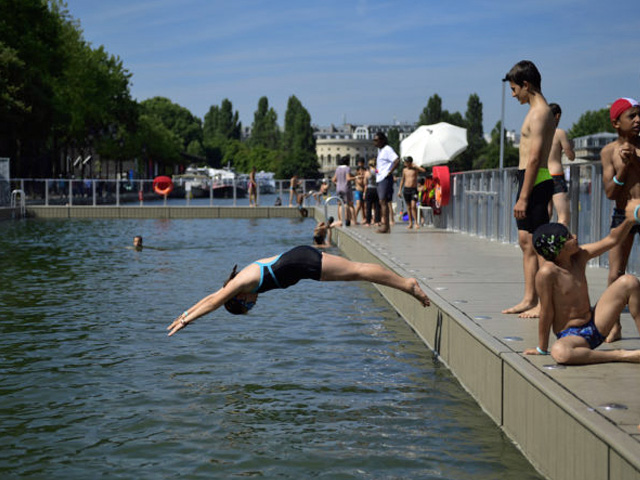In a remarkable turn of events, Paris is on the cusp of a historical transformation as it prepares to welcome swimmers and divers back to the once-banned waters of the River Seine. For over a century, the river’s filthy waters prohibited any form of aquatic activity. However, an ambitious €1.4bn (£1.2bn; $1.6bn) regeneration project has emerged as a resounding success, promising to make city swimming a lasting legacy of the upcoming Olympics.
In the past, Paris, like many Western cities, faced a decline in river quality due to industrial sewage from upstream and the increasing sanitation needs of a burgeoning population. This led to a devastating impact on aquatic life, with only three fish species recorded in the river during the 1960s. Consequently, swimming in the Seine was officially banned in 1923, although a Christmas cross-river competition persisted until World War Two.
The main obstacle to restoring the river’s cleanliness lay in the outdated 19th-century drainage infrastructure, which combined wastewater from kitchens and bathrooms with sewage from toilets. Despite significant improvements over the last two decades, eliminating the last traces of faecal bacteria to attain an official “clean” classification posed a challenge.
The solution came in the form of a vast underground reservoir, currently under construction near Austerlitz train station. This reservoir will serve as a storage facility during heavy rains, preventing wastewater overflow into the Seine. Instead, the excess water will be retained in the reservoir temporarily until the system settles down, after which it will be directed to treatment centres.
The successful completion of this mega basin ahead of next year’s Olympic Games marks a turning point for the River Seine. Not only will it serve as a venue for three Olympic and Paralympic events – triathlon, marathon swimming, and Para-triathlon – but it will also showcase the revitalized river during the opening ceremony, featuring a flotilla of 160 boats carrying 10,000 athletes down a 6km (3.7 mile) stretch to the iconic Eiffel Tower.

Moreover, the positive ecological impact of the clean-up project is evident in the return of aquatic life to the Seine. Over the years, the river has seen an impressive resurgence of fish, molluscs, aquatic insects, sponges, and crayfish. This increase in biodiversity can be attributed to the growth of water-filtering weeds, forming a virtuous circle that aids in water purification.
Parisians can look forward to the future, as the city plans to establish three open-air swimming areas accessible from the quayside by 2025. Mayor Anne Hidalgo recently unveiled these spots on the Seine, which will provide locals and visitors with a unique opportunity to swim in the heart of the city. This initiative aligns with the Paris-plages tradition, where sections of the river-quays have been transformed into beach-like amenities over the past 20 summers.
However, as with any revitalization effort, challenges remain. Concerns have been raised about the presence of rats in the city, which can carry diseases like leptospirosis. Despite this, studies indicate that the levels of leptospirosis bacteria are not significantly high, and the city is committed to monitoring and taking appropriate action to address any potential risks.
As Paris looks forward to hosting the Olympics and embracing its newfound status as a swimmer-friendly city, it is clear that the River Seine’s transformation will leave a lasting legacy. Through dedicated efforts and a visionary regeneration project, Parisians are set to reclaim their iconic river, inspiring a new generation to enjoy the waters that have played a significant role in the city’s history.


